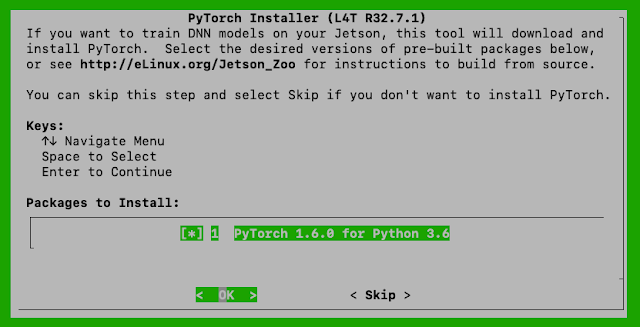Train YOLOv4 CrowdHuman on Colab for NVIDIA Jetson
For doing training on Google Colab, I use a "416x416" yolov4 model as example. I have put all data processing and training commands into an IPython Notebook. So training the "yolov4-crowdhuman-416x416" model on Google Colab is just as simple as:
(1) opening the Notebook on Google Colab,
(2) mount your Google Drive,
(3) run all cells in the Notebook.
CrowdHuman is a benchmark dataset to better evaluate detectors in crowd scenarios. The CrowdHuman dataset is large, rich-annotated and contains high diversity. CrowdHuman contains 15000, 4370 and 5000 images for training, validation, and testing, respectively. There are a total of 470K human instances from train and validation subsets and 23 persons per image, with various kinds of occlusions in the dataset. Each human instance is annotated with a head bounding-box, human visible-region bounding-box and human full-body bounding-box. We hope our dataset will serve as a solid baseline and help promote future research in human detection tasks.
We've 2 choices for Training Model.
- Darknet method
- Pytorch method
For DarkNet Method and Source Code
https://github.com/jkjung-avt/yolov4_crowdhuman
Deploying onto Jetson
To deploy the trained "yolov4-crowdhuman-416x416" model onto Jsetson Nano, I'd use my jkjung-avt/tensorrt_demos code to build/deploy it as a TensorRT engine. Here are the detailed steps:
Download the "yolov4-crowdhuman-416x416" model. More specifically, get "yolov4-crowdhuman-416x416.cfg" from this repository and download "yolov4-crowdhuman-416x416_best.weights" file from your Google Drive. Rename the .weights file so that it matches the .cfg file.
$ cd ${HOME}/project/tensorrt_demos/yolo $ wget https://raw.githubusercontent.com/jkjung-avt/yolov4_crowdhuman/master/cfg/yolov4-crowdhuman-416x416.cfg
Then build the TensorRT (FP16) engine. Note the "-c 2" in the command-line option is for specifying that the model is for detecting 2 classes of objects.
$ python3 yolo_to_onnx.py -c 2 -m yolov4-crowdhuman-416x416 $ python3 onnx_to_tensorrt.py -c 2 -m yolov4-crowdhuman-416x416
Test the TensorRT engine.
$ python3 trt_yolo.py -c 2 -m yolov4-crowdhuman-416-416 \ --image /home/jetson/Pictures/your_image.jpg
Part 2 Deploy Yolov4 CrowdHuman to NVIDIA Jetson
Run YOLOv4 CrowdHuman 416x416 on NVIDIA Jetson Nano
Run YOLOv4 CrowdHuman 416x416 on NVIDIA Jetson Xavier NX
Compare Performance
Run YOLOv4-tiny CrowdHuman 416x416 on NVIDIA Jetson Nano
Compare YOLOv4 vs. YOLOv4-tiny on NVIDIA Jetson Nano
Reference
CrownHuman Dataset https://www.crowdhuman.org/
DarkNet YOLO https://github.com/AlexeyAB/darknet






























